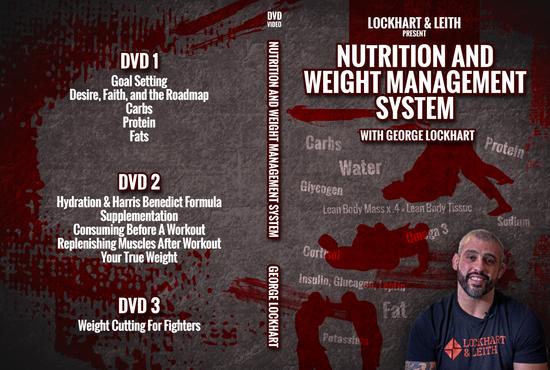Do you know how to cut carbs from your diet without doing damage to your body? With these approaches and foods you can do it safely.
Carbohydrates seem to have gained an extremely unpopular reputation in recent years. With claims that carbohydrates are responsible for an increase in type 2 diabetes, obesity, and certain cancers, it’s no wonder that cards are demonized.
But this couldn’t be further from the truth. What’s so important to remember is that not all carbohydrates are made equal. Yes, there are ”bad” carbs, but there are more good carbs and low-carb alternatives to supplement your diet with.
If you’re interested in learning how to cut carbs from your diet in a healthy, sustainable way, then this blog can help…
Understanding Carbohydrates
So, what exactly are carbohydrates? They are one of three main food groups which are essential in maintaining a healthy, balanced diet. The other two include protein and fats.
Carbohydrates are used as an energy source for your body. They are broken down by the liver and converted into glucose for energy, which is either used immediately or stored in the muscles and liver.
However, if these carbohydrate stores are not used up later on, the body turns them into fat. This is where much of a large portion of society runs into an issue with obesity, type 2 diabetes, heart disease, and some cancers.
Is a Low Carbohydrate Diet Good For You?
In short, yes a low carbohydrate diet is good for you if it’s maintained in a healthy, sustainable way. Cutting carbs out of your diet completely can be dangerous and is not a great long-term solution to weight loss or healthy living.
This is where a low-carb, high-fat diet (LCHF diet) comes into play.
Maintaining a diet that is high in protein and healthy fats helps to keep you fuller for longer while maintaining a consistent blood sugar level. Essentially, this helps to eliminate cravings for unhealthy carbohydrates such as unrefined sugar.
Including successful weight loss and weight management, a LCHF diet has proven to help in the management of certain diseases such as:
- Alzheimer’s disease
- Heart disease
- Type 2 diabetes
- Hypertension
- Polycystic Ovarian Syndrome (PCOS)
- Certain types of cancer
What’s important to bear in mind is that carbohydrates are not the enemy. Only the type and amount of carbohydrate you consume.
How To Cut Carbs: 5 Healthy Tips and Foods
Kicking off your journey into a low-carb diet may be challenging at first. But having the right type of education on how to substitute your diet with healthy, enriching foods will stand you in good stead:
-
Understand What Low Carb Foods Are
In short, low-carb foods include food groups which are not based around starchy, sugar-packed food items. It’s important to remember that some vegetables also count as high-carb foods.
Quite simply, some of the best low-carb foods include:
- Low carb bread and other wholegrain varieties of rice and pasta
- Fish
- Eggs
- Leafy green vegetables as well as cauliflower and broccoli
- Fruits such as apples, strawberries, and blueberries
- Plain whole milk and Greek yogurt
- Lean meats including chicken, pork, and sirloin steak
- Natural oils and nut butter such as coconut oil, olive oil, almond butter
It’s 100% possible to eat and maintain a healthy, balanced low-carb diet with all of the above food groups.
-
Understand Carb Counts and Serving Sizes
If you are intent on closely following a low-carb diet, then it’s important to understand just how much carbohydrates you can consume in a day.
Usually, the amount ranges from 20-50 grams of carbs per day. But what’s important to remember is to consume foods high in other nutritional value too, not just a low carb count.
While most low-carb foods and their serving amounts contain the same amount of carbs, they aren’t all nutritionally equivalent. So it’s important to ensure you’re eating foods high in protein and fats in order to maintain a healthy balance and keep yourself energized.
-
Establish a Maintainable Meal Plan
If you want to follow a low-carb diet, make sure your meal plan is easy to follow and completely maintainable in the long-run. Eating in a calorie or energy deficit will ultimately have negative effects on your weight loss and overall health.
A meal plan is also a great way to organize your food and carbohydrate consumption for the following week. In essence, it just makes life a lot easier!
Knowing what you are eating for breakfast, lunch, and dinner can help you stick to your diet and weight loss or health goals. It can also help you avoid making unhealthy food decisions when you’re busy and on-the-go.
-
Prepare Your Meals
This is similar to the above point and drives home the same concept- preparation is key when following a low-carb diet! Not only can meal prep can save you time during busy weeks, but it can also save you money and help you to avoid bad food choices.
Prepare your weeks’ worth of breakfasts and lunches on a Sunday just before the new week begins. Store them in air-tight containers in your fridge or freezer so they are ready to heat and go.
Some simple low-carb breakfast options to prepare ahead of time include high protein egg muffins, protein pancakes, Greek yogurt bowls, or chia seed breakfast puddings.
Lunch options to prepare ahead of time include the likes of chicken lettuce wraps, pork stir fry with leafy green vegetables, and more.
-
Stock Up on Low-Carb Snack Options
Snacking throughout the day while you’re on a low-carb diet is highly recommended to help keep your energy levels stable. But it’s important to stock up on healthy, low-carb snack options.
Some of these include simple staples such as hard-boiled eggs, carrots sticks and hummus, nuts, cheese, and unsweetened, natural yogurt. Remember to regulate the portion sizing of your snacks so you’re not overeating throughout the day!
Strength and Stamina of Fitspo at Your Fingertips
Now that you’re a little more educated on how to cut carbs in a healthy, maintainable way, are you ready to build up your strength?
If you’ve been considering martial arts, specifically the practice of Jiu-Jitsu, check out the rest of our site for strength, stamina, and inspirational technique!
If you are not sure where to start and how to eat well, check out our newest and best-selling diet product from George Lockhart. Lockhart is one of the UFC’s leading nutritionist and has helped some of the best professional athletes in the world lose weight and doing it in a healthy fashion. Lockhart is the real deal and this product can literally change your life. It is an E-Book and a DVD. This is also available as a digital download below.


















